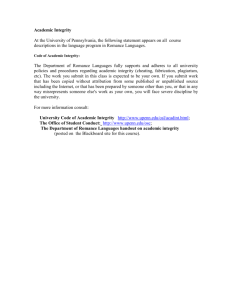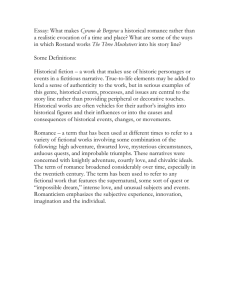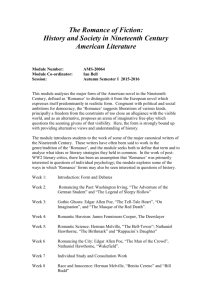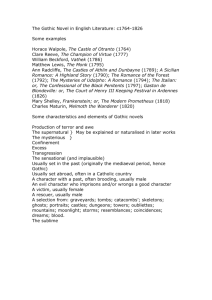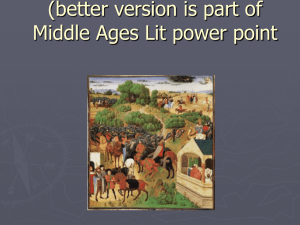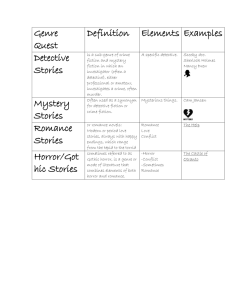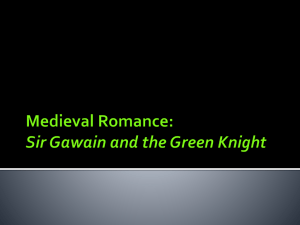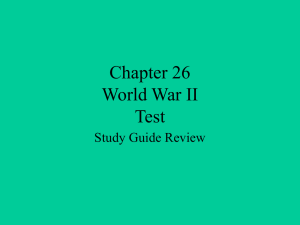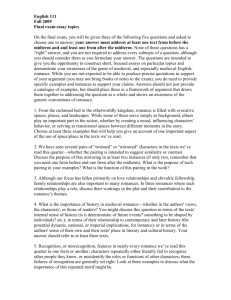Anglo-Norman Literature
advertisement
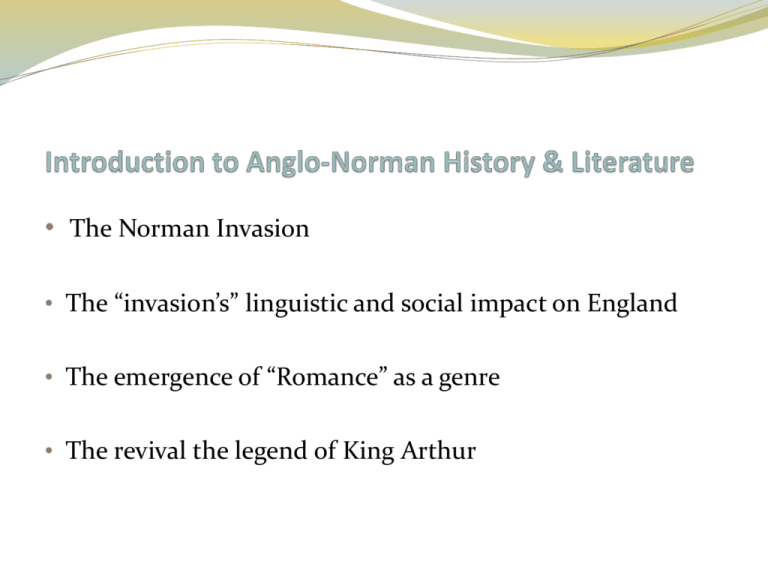
• The Norman Invasion • The “invasion’s” linguistic and social impact on England • The emergence of “Romance” as a genre • The revival the legend of King Arthur ENGLAND Battle of Hastings (1066) NORMANDY (Part of France) William, Duke of Normandy, defeats Harold II, King of England. William “the Conqueror” becomes King of England. NORSEMEN Men from Northern Europe were known as Norsemen (North men). Not only did they invade Britain in the 5th century; they also migrated southwest to what came to be known as Normandy (in France). The Normans invaded England in the 11th century (1066-) and forever changed it. The word France derives from the Franks, a Germanic nation whose power and size increased under Charlemagne, King of the Franks (742-814). The Norman “Invasion” is marked by the Battle of Hastings, but the “invasion” really was a slow process of acculturation that occurred after the battle; in other words, the real “invasion” was the impact the French language and culture had on England. “The presence of a French-speaking ruling class in England created exceptional opportunities for linguistic and cultural exchange” (NA 7). “The number of French words that poured into English was unbelievably great. There is nothing comparable to it in the previous or subsequent history of the language.” (A History of the English Language 167) “The upper classes carried over into English an astonishing number of common French words. In changing from French to English they transferred much of their governmental and administrative vocabulary, their ecclesiastical, legal, and military terms, their familiar words of fashion, food, and social life, the vocabulary of art, learning, and medicine.” (A History of the English Language 168) • See the handout for more details and specific examples of words “The Anglo-Norman aristocracy was especially attracted to Celtic legends and tales that had been circulating orally for centuries. [Some] twelfth-century poets . . . claim to have obtained their narratives from Breton [British] storytellers, who were probably bilingual performers of native tales for French audiences. . . . Cretien [de Troyes] is the principle creator of the romance of chivalry in which knightly adventures are a means of exploring psychological and ethical dilemmas that the knights must solve, in addition to displaying martial prowess in saving ladies from monsters, giants, and wicked knights” (NA 8). [Poets such as] Chretien de Troyes were innovators of the genre that has become known as ‘romance.’ . . . Eventually ‘romance’ acquired the generic associations it has for us as a story about love and adventure. Romance was the principle narrative genre for late medieval readers. Insofar as it was centrally concerned with love, it developed ways of representing psychological interiority with great subtlety. (NA 8) (by the way, it’s worth noting that while “romance” seems quite absent from an Anglo-Saxon epic like Beowulf, Greek and Roman poets such a Sappho and Ovid gave great attention to romantic love) . . . The court of King Arthur had already acquired for French audiences a reputation as the most famous center of chivalry. . . . the bulk of [such] history was probably fabricated from Celtic oral tradition. (NA 8-9) • King Arthur was a legendary king of Britain that led the defense of his nation against Anglo-Saxon invaders in the 6th century. • His legend was popularized especially in the 12th century, colored and transformed by the culture at that time—altered by the interests and refinement of the 12th century noble class.

